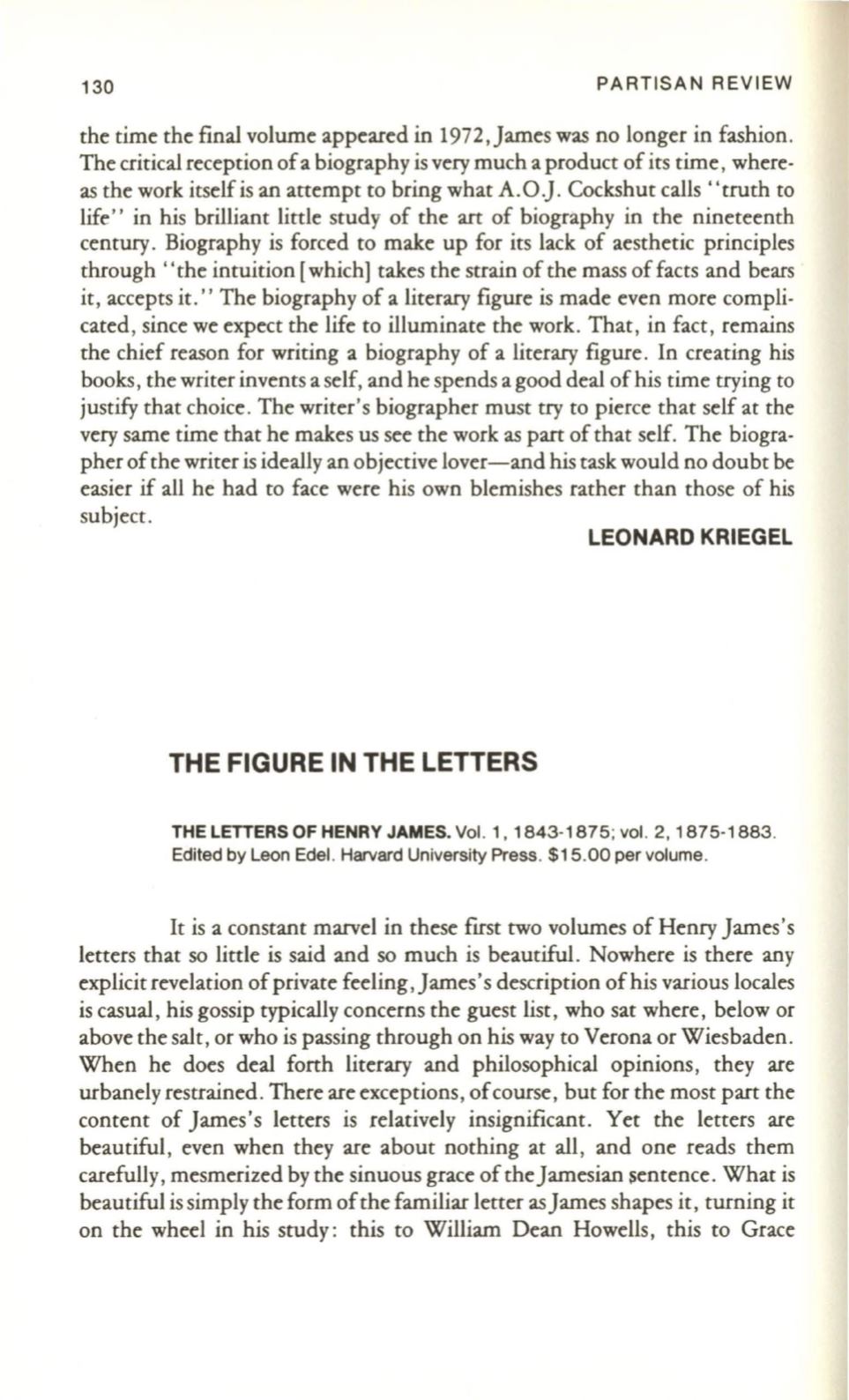
130
PARTISAN REVIEW
the time the final volume appeared in 1972, James was no longer in fashion.
The critical reception ofa biography is very much a product of its time, where–
as the work itself is an attempt to bring what A.O.]. Cockshut calls "truth to
life" in his brilliant little study of the art of biography in the nineteenth
century . Biography is forced to make up for its lack of aesthetic principles
through' 'the intuition [which
1
takes the strain of the mass of facts and bears
it, accepts it ." The biography of a literary figure is made even more compli–
cated, since we expect the life to illuminate the work. That, in fact, remains
the chief reason for writing a biography of a literary figure. In creating his
books, the writer invents a self, and he spends a good deal of his time trying to
justify that choice. The writer's biographer must try to pierce that self at the
very same time that he makes us see the work as part of that self. The biogra–
pher of the writer is ideally an objective lover-and his task would no doubt be
easier if all he had to face were his own blemishes rather than those of his
subject.
LEONARD KRIEGEL
THE FIGURE IN THE LETTERS
THE LETTERS OF HENRY JAMES.
Vol. 1, 1843-1875; vol. 2, 1875-1883.
Edited
by
Leon Edel. Harvard University Press. $15.00 per volume.
It
is a constant marvel in these first two volumes of Henry James's
letters that so little is said and so much is beautiful. Nowhere is there any
explicit revelation of private feeling, James's description of his various locales
is casual, his gossip typically concerns the guest list, who sat where, below or
above the salt, or who is passing through on his way to Verona or Wiesbaden.
When he does deal forth literary and philosophical opinions, they are
urbanely restrained. There are exceptions, ofcourse, but for the most part the
content of James's letters is relatively insignificant. Yet the letters are
beautiful, even when they are about nothing at all, and one reads them
carefully, mesmerized by the sinuous grace of the Jamesian
~entence.
What is
beautiful is simply the form of the familiar letter asJames shapes it, turning it
on the wheel in his study: this to William Dean Howells, this to Grace


